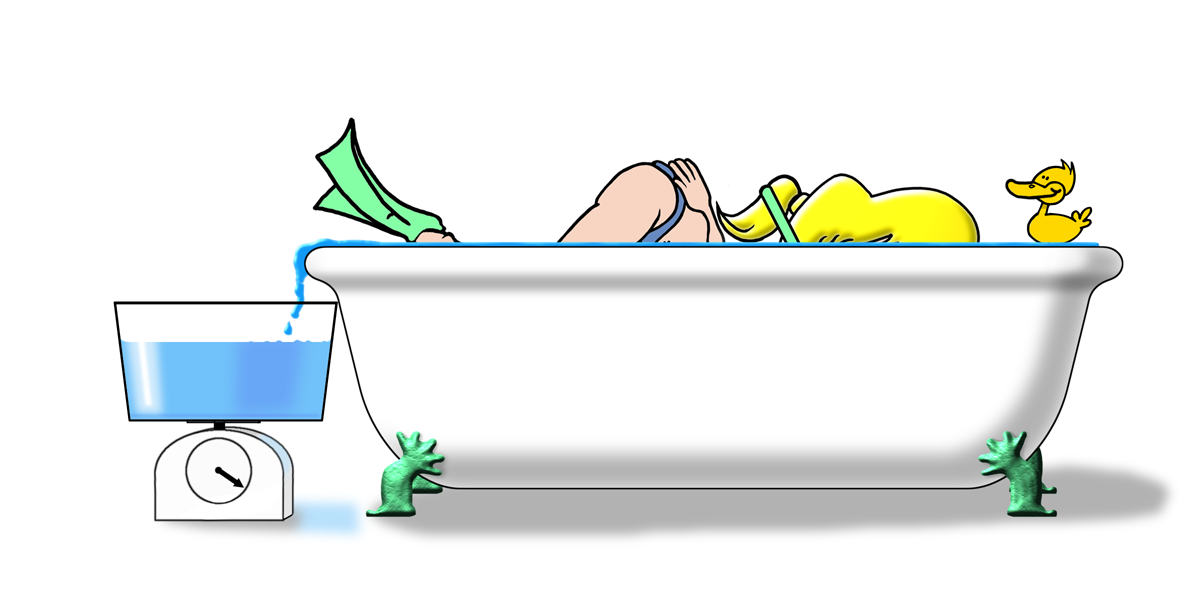Any mass immersed in a liquid has a buoyancy force equal to the liquid weight which it displaces (Archimedes' Law). For example: A diver that weighs 80 kg with a body volume of 78 liters (meaning, his bodydisplaces 78 liters of water that weigh 78 kg), will weigh underwater only 2 kg (80-78 = 2). Thus, when diving underwater, humans are practically weightless. This condition allows one to move (on top of moving forward, backward, right and left) upwards and downwards. Divers are able to control their buoyancy conditions - float, hover or sink.

When diving, three buoyancy conditions are common:
Positive buoyancy - when the diver is lighter than water and is floating upon it. This condition is achieved by filling the buoyancy compensator.
Negative buoyancy - when the diver empties the buoyancy compensator in order to sink and becomes heavier than the water.
Neutral buoyancy - the optimal condition when diving. This is a feeling of weightlessness in the water, which is one of the most definite characteristics of diving. Having no dependence on the ground in order to move forward and the possibility of hovering, makes diving a unique experience.
 According to Archimedes' Law, a mass' weight will lessen when immersed in liquid.
According to Archimedes' Law, a mass' weight will lessen when immersed in liquid.
It is not possible to copy content from this course.
If the course is interesting you can share it with your friends
In order to take the following knowledge exem,
you must review all the topics of this chapter
In order to move on to the next chapter
You must pass the previous chapter exam.
In order to start the final exam
You must complete the entire course
To move on to the next chapter
You are required to pass the exam for this chapter.
This content can be viewed
Only by purchasing the full course
purchase this course